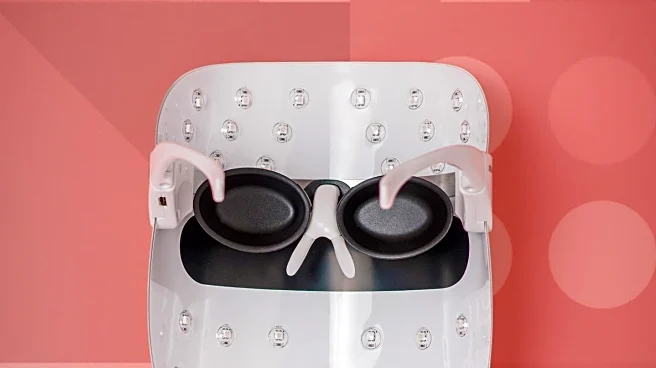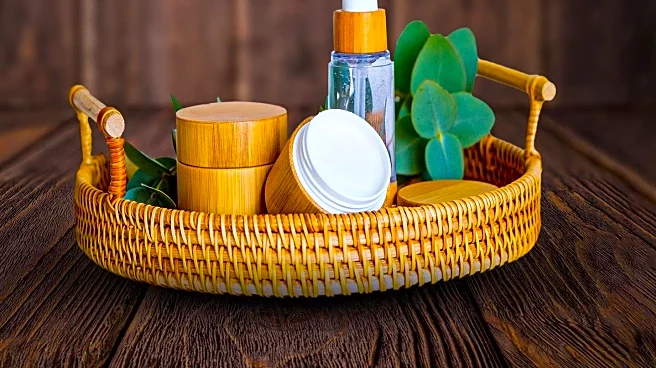What's Happening?
Sebaceous filaments, often mistaken for blackheads, are tubular structures within the pores that help transport sebum to the skin's surface, maintaining moisture and protecting the skin barrier. Unlike
blackheads, which are a form of acne caused by clogged pores, sebaceous filaments are a normal part of skin anatomy and are crucial for skin health. Dermatologists emphasize that while these filaments may not be aesthetically pleasing, they serve an important function in keeping the skin moisturized. They are most visible in areas with high sebum production, such as the T-zone. Factors like age, skin type, and hygiene can affect their visibility.
Why It's Important?
Understanding the difference between sebaceous filaments and blackheads is essential for proper skin care. Misidentifying these structures can lead to unnecessary and potentially harmful skin treatments. Sebaceous filaments play a vital role in maintaining skin health by ensuring adequate moisture and protecting against environmental damage. Proper skin care routines, including regular cleansing and the use of exfoliating acids, can help manage their appearance without compromising their function. This knowledge can help individuals make informed decisions about their skincare practices, potentially reducing the risk of skin irritation and damage.
What's Next?
For those concerned about the appearance of sebaceous filaments, dermatologists recommend maintaining good facial hygiene, using retinoids, wearing sunscreen, and considering clay masks or professional facials. These strategies can help minimize their visibility while preserving their beneficial role in skin health. However, it is important to manage expectations, as sebaceous filaments cannot be completely removed. Individuals should consult with dermatologists to tailor skincare routines that address their specific concerns without compromising skin health.
Beyond the Headlines
The discussion around sebaceous filaments highlights broader issues in skincare, such as the impact of societal beauty standards and the importance of understanding skin anatomy. It underscores the need for education on skin health to prevent misconceptions and promote practices that support long-term skin wellness. This knowledge can empower individuals to embrace their natural skin features and make informed choices about skincare products and treatments.












